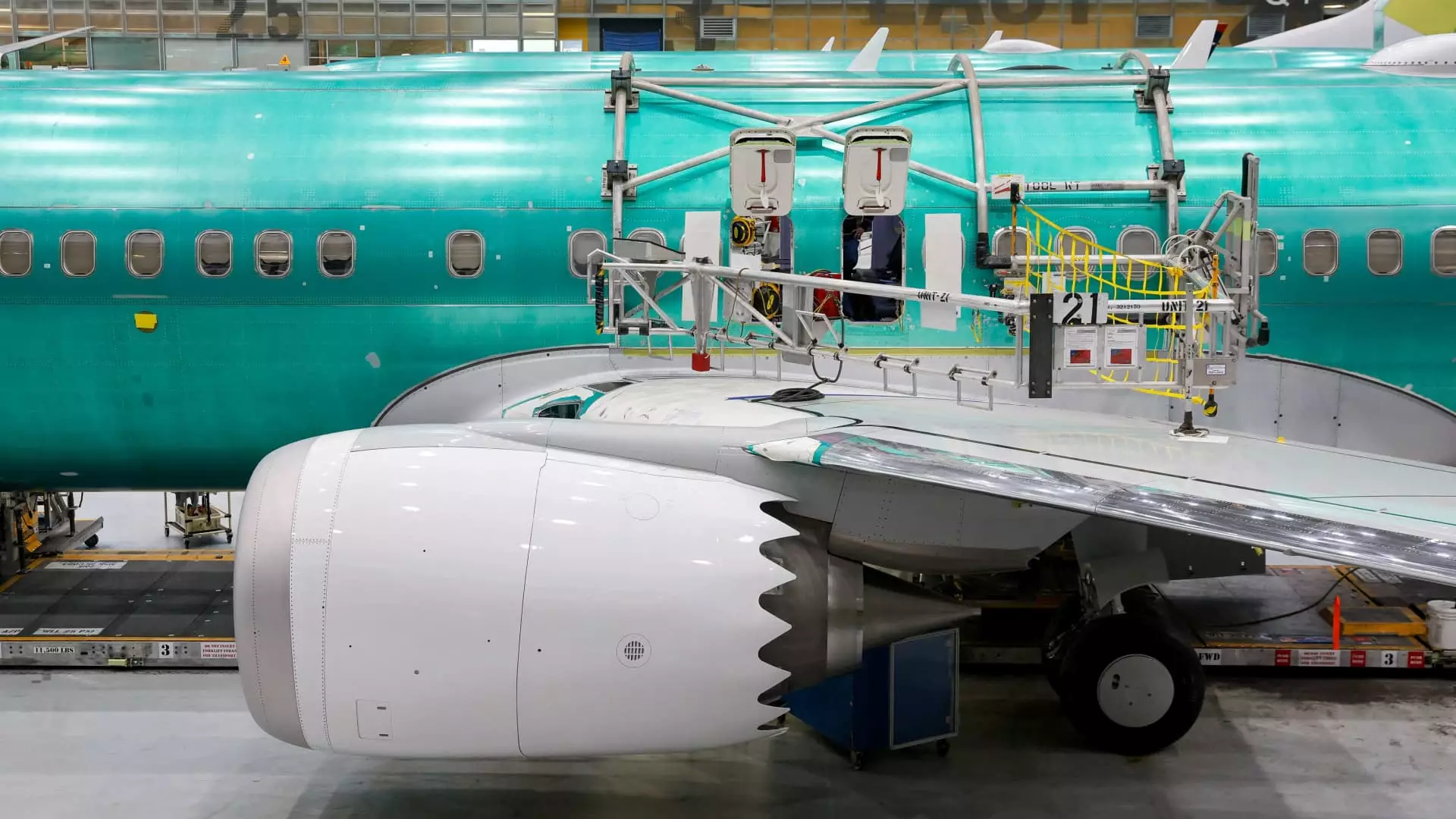Boeing, one of America’s most prominent aerospace manufacturers, is currently in a critical phase of reconstruction following a series of high-profile setbacks. The year prior witnessed an alarming incident involving an Alaska Airlines Boeing 737 Max 9, which was naturally disheartening for the company and the aviation industry alike. A fuselage panel covering an inactive emergency exit door blew mid-flight, provoking fear among passengers despite no severe injuries. Investigations revealed fundamental lapses in quality control, specifically the failure to install key bolts, further dimming Boeing’s already tarnished reputation. In light of these events, Boeing must confront a deteriorating stock value, a staggering 30% drop in the last year while the S&P 500 thriving, forcing the company into a stringent recovery strategy.
To address these challenges, Boeing’s leadership has undergone a significant transformation. The appointment of Kelly Ortberg as the new CEO represents a willingness to embrace change and accountability. Ortberg, whose extensive experience within the aerospace sector brings a fresh perspective to the company, is charged with rebuilding trust within the industry and among stakeholders. Since his taking over, Ortberg has been vocal about implementing structural changes, emphasizing robust training programs for factory workers and accountability measures that aim to rectify the quality issues that have marred Boeing’s operations.
Importantly, Ortberg’s management approach seems dedicated to transparency and frequent audits. The company has commenced random quality checks at factories, which aim to foster a culture that prioritizes safety above all else—a hard pivot from the profit-centric focus that contributed to previous crises. This shift underscores a recognition within Boeing that merely returning to pre-crisis production rates is insufficient; systemic change is paramount for long-term viability.
The Federal Aviation Administration (FAA), keenly aware of Boeing’s past indiscretions, has stepped up its oversight, particularly regarding the production of 737 Max jets. Capping production volumes, the FAA has reinforced its commitment to enhanced scrutiny to ensure compliance with safety standards. As FAA chief Mike Whitaker succinctly puts it, the road to recovery is a sustained effort rather than a quick fix. His assertion that Boeing must undergo a cultural overhaul emphasizes the critical need for a complete paradigm shift in strategy, one that embeds safety and quality at the foundational level rather than relegating them to secondary importance.
Despite these regulatory interventions, Boeing’s challenges remain formidable. Following the two tragic crashes that claimed 346 lives—resulting from design flaws in the 737 Max’s flight control system—the company faces the arduous task of recuperating lost public confidence. This restoration extends beyond technical corrections; it necessitates rebuilding a sense of reliability in one of the industry’s key players.
Financially, Boeing has been grappling with the repercussions of its operational failures, losing over $30 billion since the onset of their crises in 2019. This immense financial toll comes at a time when competitors like Airbus are seizing market opportunities and surpassing Boeing’s delivery volumes. Recognizing the gravity of the situation, Ortberg plans to streamline operations while cutting about 10% of the workforce, an indication of the intense internal tightening needed to return the company to a state of profitability.
Additionally, Boeing’s renewed focus on its core operational strengths, as Ortberg has articulated, represents a strategic recalibration that may ultimately determine the company’s pathway to recovery. The philosophy of “doing less but doing it better” encapsulates this newfound commitment to quality and precision over sheer volume—aligning closely with a necessary cultural shift for the beleaguered organization.
As Boeing embarks on what must be a conscious effort towards regeneration, the company must not only respond to existing pressures but also anticipate future demands in an increasingly competitive and safety-conscious market. With travel rebounding post-pandemic, Boeing’s ability to deliver reliable jets hinges on its success in stabilizing production lines while adhering to rigorous safety standards.
The comprehensive engagement of its workforce and the renewed emphasis on transparency may hold the key to innovative solutions that can propel Boeing towards attaining its operational goals. However, this ambitious pathway demands commitment and rigorous effort from every level of the organization. Only through such dedication—bolstered by an unwavering public and regulatory eye—will Boeing hope to rise from the ashes of its operational failure into a renewed era of trust and excellence in aviation manufacturing.

